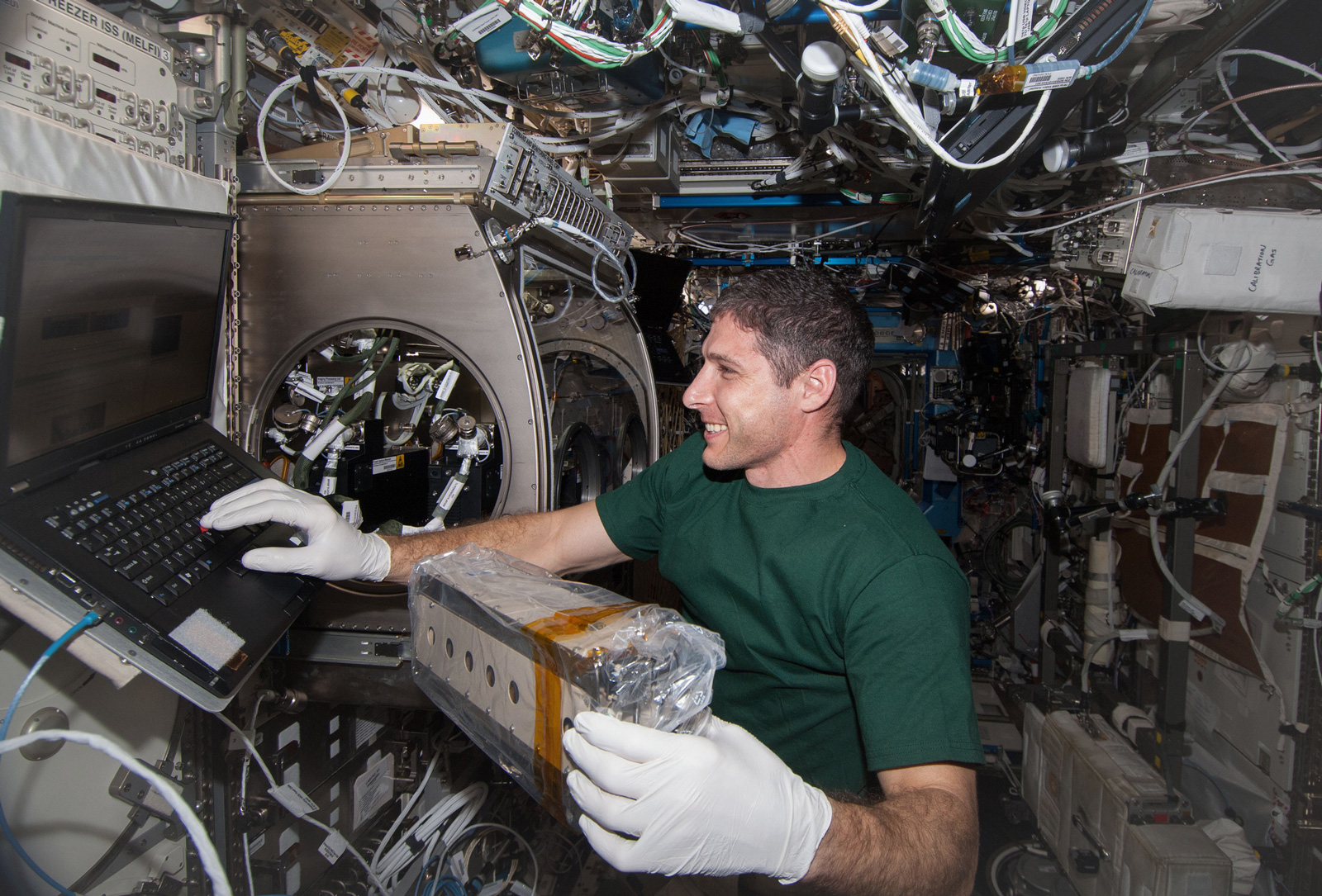The SODI-DCMIX2 experiment aims to study the diffusion coefficients of ternary fluid mixtures samples in a microgravity environment. In specific, in different petroleum field samples and refine petroleum reservoir models, to help lead to more efficient extraction of oil resources.
Development and validation of the on-board procedures and automatic scripts, planning of the on-board activities, remote control and monitoring of the payload, troubleshooting of anomalies in a quick and agile way, data retrieval and dissemination to the scientific community, have been some of the tasks carried on by E-USOC in this project, for which there has been a tight coordination and collaboration with NASA.
NASA astronaut Mike Hopkins (@astroillini) installed ESA’s Selectable Optical Diagnostics Instrument (SODI) inside the Microgravity Science Glovebox (MSG) on November 14, although the Cell Array (CA) of fluids was not installed until the end of the month, when it reached the ISS aboard the Progress 53 cargo ship. One of the most determining factors for the success of the mission was the limited lifetime of those fluid samples, an event determined by the appearance of bubbles. So, prior to its arrival to the Space Station, E-USOC team conducted a thorough optical checkout and calibration tests of relevant importance, because they allowed to start operating and generating useful science data from the very first moment of the Cell Array installation.
The mission concluded successfully after more than two month of operations. The payload was uninstalled on February 7th and the Cell Array was removed and is planned to be disposed of (destructive re-entry in a Progress spacecraft).
Scientific results and future applications
From the scientific point of view, the experiment has generated a substantial amount of high quality images of great value for the analysis of the processes involved in the diffusion of ternary fluid mixtures. In light of these good results, both NASA and ESA agreed to extend the operations one additional week. The extra activities turned out to produce more valuable science data, not considered initially in the mission’s main purposes. For example, the gas bubble appearing in the liquid cell over time was used by the science team for thermo/solute capillary (Marangoni effect) convection runs. Furthermore, downloaded images from the primary runs already seem to prove the predicted huge Soret effect.
E-USOC has received international recognition for the great performance in these operations. The European Space Agency in particular said:
“The Agency would like to remark outstanding activities done by E-USOC in performing SODI-DCMIX2 and the positive conclusion of the DCMIX2 experiments, as also positively acknowledged by the science community. The Agency congratulates E-USOC to this success.”
Source: NASA
It is worth mentioning that the E-USOC team member José Miguel Ezquerro has been nominated to the prestigious Zeldovich Medal, a prize awarded by the Russian Academy of Sciences and the COSPAR Space Scientific Committee to young scientists for their excellence.
DCMIX2 is the second of a series of five experiments. E-USOC has been designated by ESA as responsible for the SODI payload, and has already started working on the preparation activities for DCMIX3, foreseen for the end of 2014.



